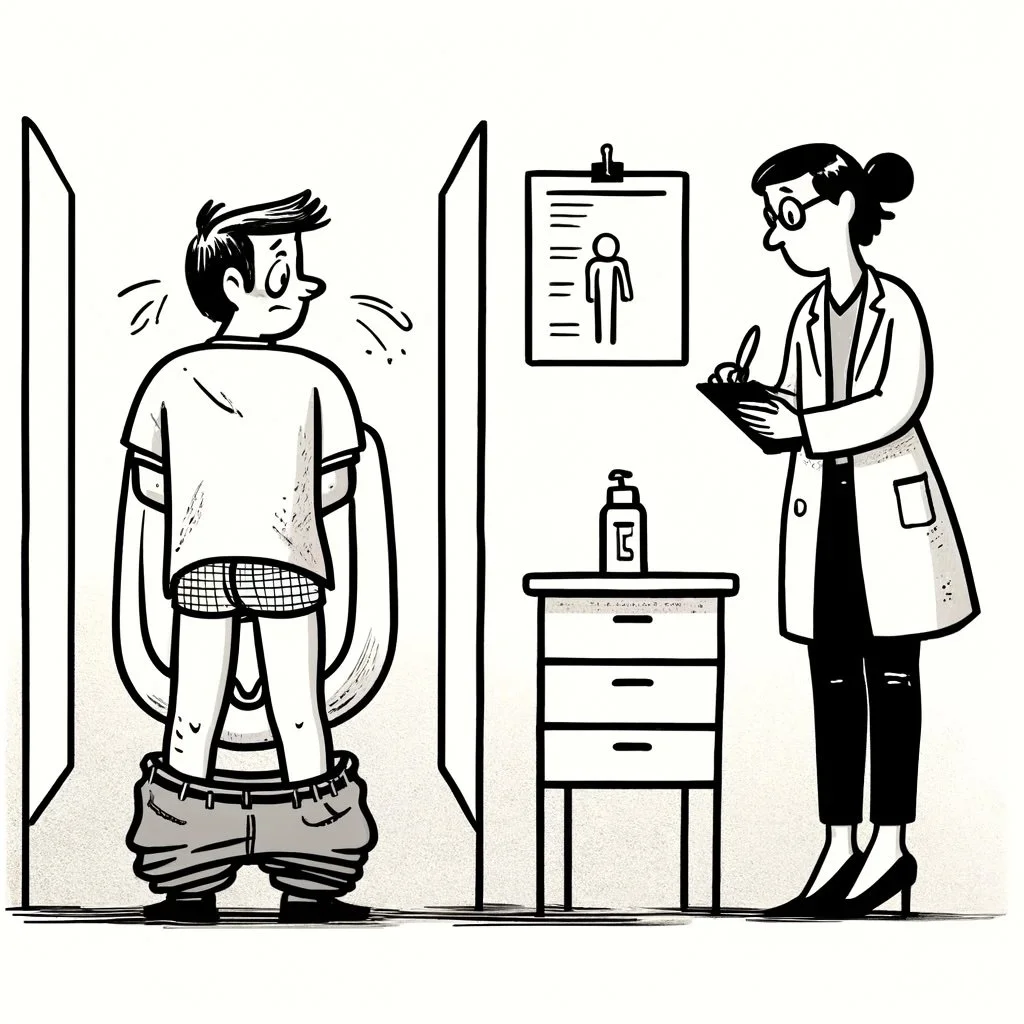Paruresis (aka shy bladder syndrome): It’s Not “All in Your Head”
Paruresis, also known as "shy bladder syndrome," is a social anxiety disorder that affects an estimated 7–20% of the population, though exact figures vary due to underreporting. This condition prevents individuals from urinating in the presence (or perceived presence) of others. The experience can be isolating and deeply distressing, yet it remains shrouded in shame, leaving many sufferers to struggle in silence. In severe cases, paruresis can escalate into a medical issue, leading to chronic urinary retention, painful bladder symptoms, or an increased risk of urinary tract infections (UTIs).
Adding to the frustration, medical professionals often misinterpret paruresis. Too often, sufferers are told that it’s “all in their head.” This dismissal not only invalidates their experience but also neglects the profound physiological mechanisms at play. The truth? It’s not all in your head—it’s very much in your body.
A Lockdown Triggered by Anxiety
Paruresis is a type of social anxiety disorder, and like other anxiety disorders, it arises from a misfiring of the brain's fear circuitry. At its core is the amygdala, the brain’s alarm system. In individuals with paruresis, the amygdala overreacts to perceived social scrutiny, triggered by "chatter" from the prefrontal cortex—our internal commentator.
When the amygdala activates, it floods the body with stress hormones like adrenaline, preparing us for “fight or flight.” This activation impacts the body in many ways, including a tightening of the pelvic floor and external urethral sphincter muscles. These muscles are designed to relax when urinating, but anxiety locks them into a defensive state, making the act of urination physically impossible.
In other words, paruresis isn’t a matter of willpower. It results from an involuntary physiological response, rooted in the interplay between brain and body.
Why Relaxation Alone Isn’t the Solution
Many people with paruresis try to relax their way out of the problem—deep breathing, calming music, or even suppressing the need to urinate altogether. But these strategies can backfire. Attempting to “force” relaxation can reinforce the idea that something is wrong with your body, much like what happens in panic attacks. The harder you try, the more resistant your body becomes.
The solution lies in a counterintuitive approach: acceptance. Borrowing from frameworks like Mindfulness-Based Stress Reduction (MBSR) and Acceptance and Commitment Therapy (ACT), the goal is to “open up to” paruresis rather than fight it. Learning to sit with the discomfort, embrace the sensations, and approach the fear with curiosity can begin to unravel the conditioned response.
Exposure Therapy: Facing the Fear
At the heart of effective treatment for paruresis is Exposure and Response Prevention (ERP), a gold-standard treatment for anxiety disorders. ERP involves gradually exposing oneself to feared situations (e.g., public restrooms) while resisting the urge to escape or control the situation. Over time, this retrains the brain to view these scenarios as safe, weakening the amygdala’s grip.
Paired with mindfulness and self-compassion practices, ERP can help individuals reconnect with their bodies in a gentler, more accepting way. This approach encourages a mindset of “loving your paruresis” rather than waging war against it.
There is hope
Paruresis may feel like a lonely battle, but it’s one that countless others have faced—and overcome. The shame and secrecy surrounding the condition can make it seem insurmountable, but help is available. Working with a therapist who specializes in anxiety disorders can provide a structured and supportive path toward healing.
Your body isn’t broken. It’s simply reacting to perceived threats in a way that can be unlearned. With patience, persistence, and the right tools, freedom from paruresis is entirely possible.
International Paruresis Association (IPA): https://paruresis.org/

